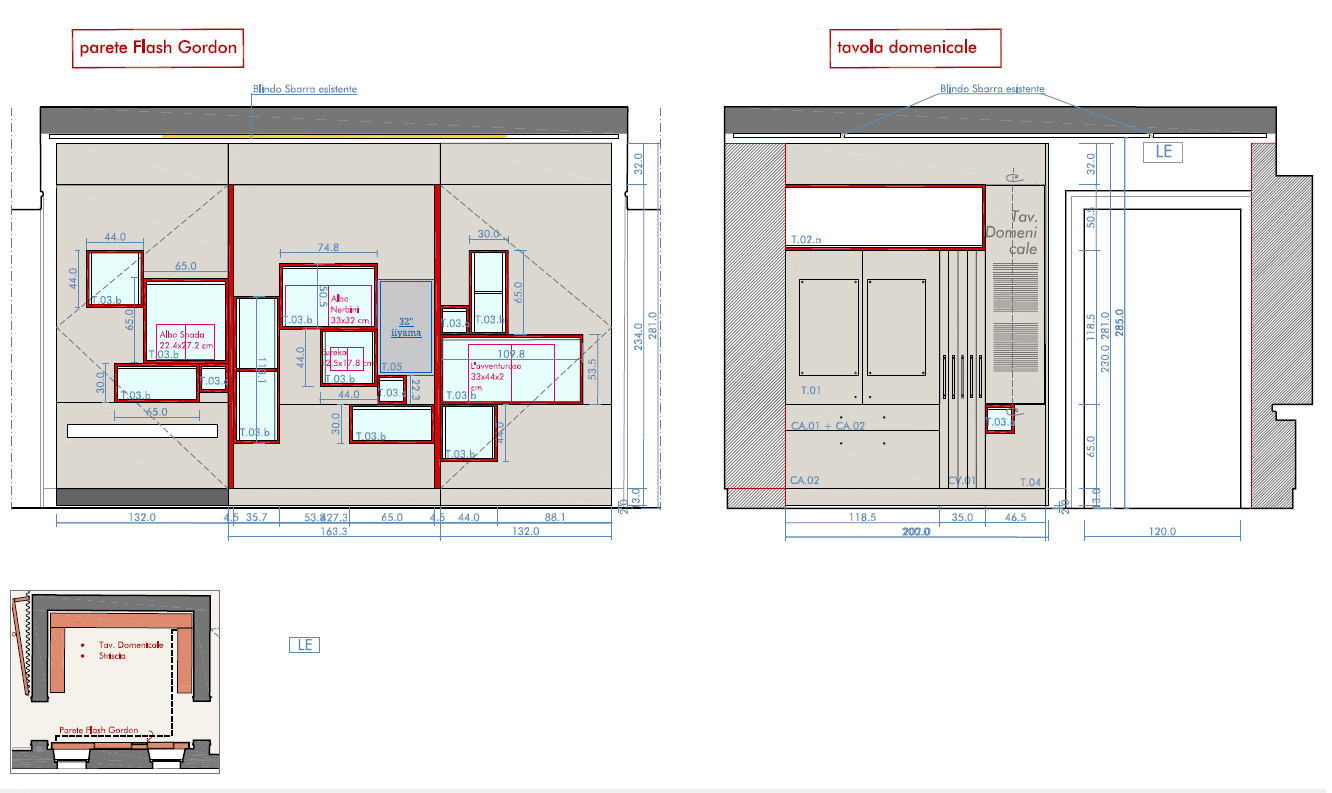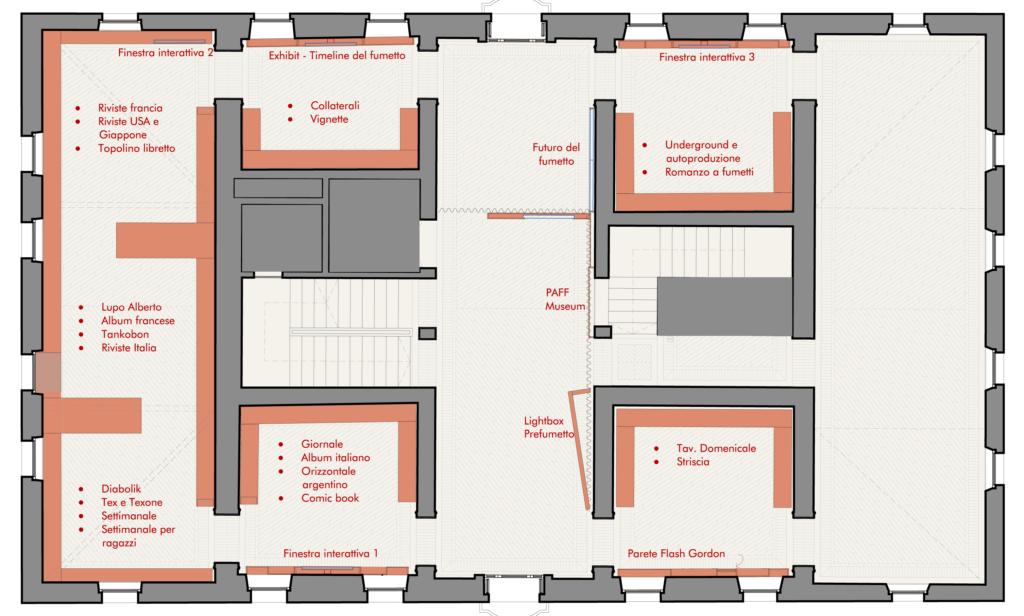PAFF! International Museum of Comic Art
2020-2023 – Villa Galvani, Pordenone
Progetto ed allestimento museo permanente
Fondi Contenitori Culturali e Creativi – Regione FVG L.R. 16/2014
L’obiettivo del progetto era trasformare una storica villa immersa in un parco, entrambi trascurati, nel primo Museo del fumetto italiano. La realizzazione del PAFF! International Museum of Comic Art è l’ultimo tassello di questo progetto di recupero e valorizzazione che, affiancando l’esposizione permanente ad attività ludiche, didattiche e formative, rende il museo un’Industria Culturale Creativa (ICC). Il progetto trasforma in tavole grafiche le pareti stesse le quali, composte da una serie di moduli, presentano il fumetto nei suoi diversi formati. Le opere si scoprono gradualmente attraverso un’esperienza attiva ed un crescendo emotivo: per entrare in contatto con le opere, il visitatore è chiamato ad agire sulle pareti aprendo ante, cassetti e pannelli, svelandone i contenuti. Una forte componente multimediale, grazie a più di 50 monitor touch-screen, rende possibili diverse modalità di interazione e ulteriori livelli di lettura. Insieme alle opere le pareti ospitano in teche colorate numerosi oggetti e pubblicazioni che contribuiscono a creare l’atmosfera e offrono spunti di riflessione e approfondimento.
The target of the project was to transform a historic villa surrounded by a neglected park into the first Museum of Italian Comics. The realization of PAFF! International Museum of Comic Art is the final piece of this restoration and enhancement project, which, by combining permanent exhibitions with recreational, educational, and learning activities, turns the museum into a Cultural and Creative Industry (CCI). The project transforms the walls themselves into graphic tabels, composed of a series of modules showcasing comics in their various formats. The works are gradually revealed through an active and emotional experience: to engage with the artwork, visitors are encouraged to interact with the walls by opening doors, drawers and panels unveiling their contents. A strong multimedia component with over 50 touch-screen monitors enables various modes of interaction and additional layers of interpretation. The walls house the artworks as well as numerous objects and publications in colorful display cases that contribute to creating the atmosphere and provide insights for reflection and further exploration.






